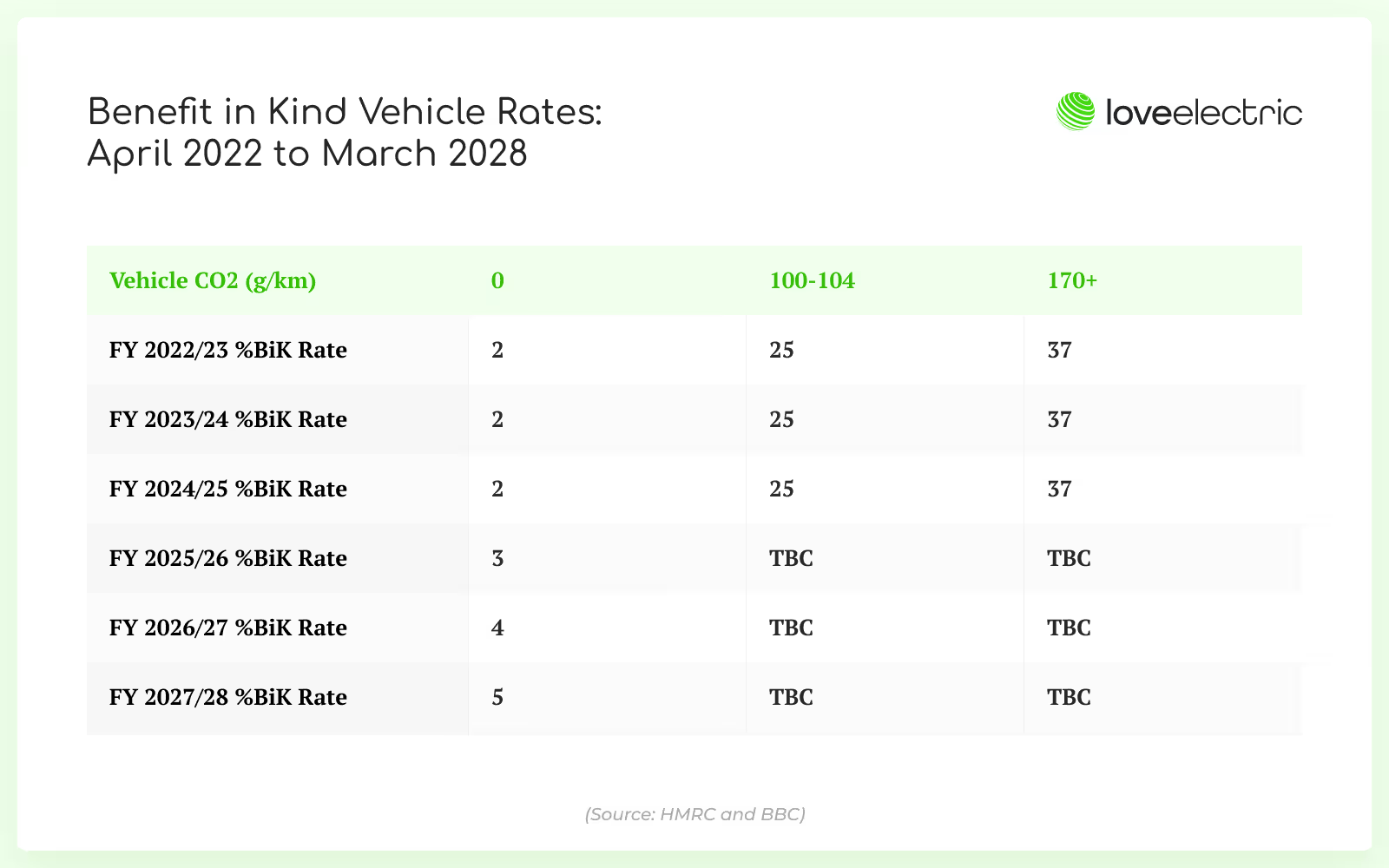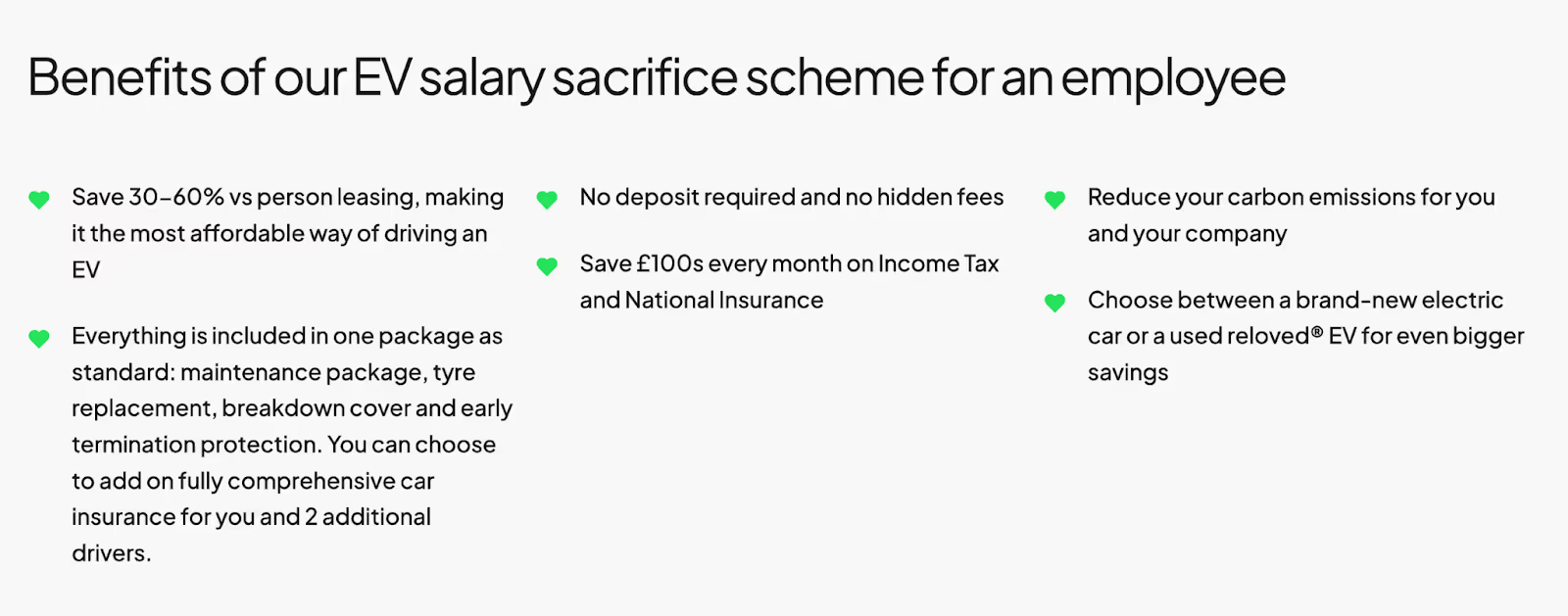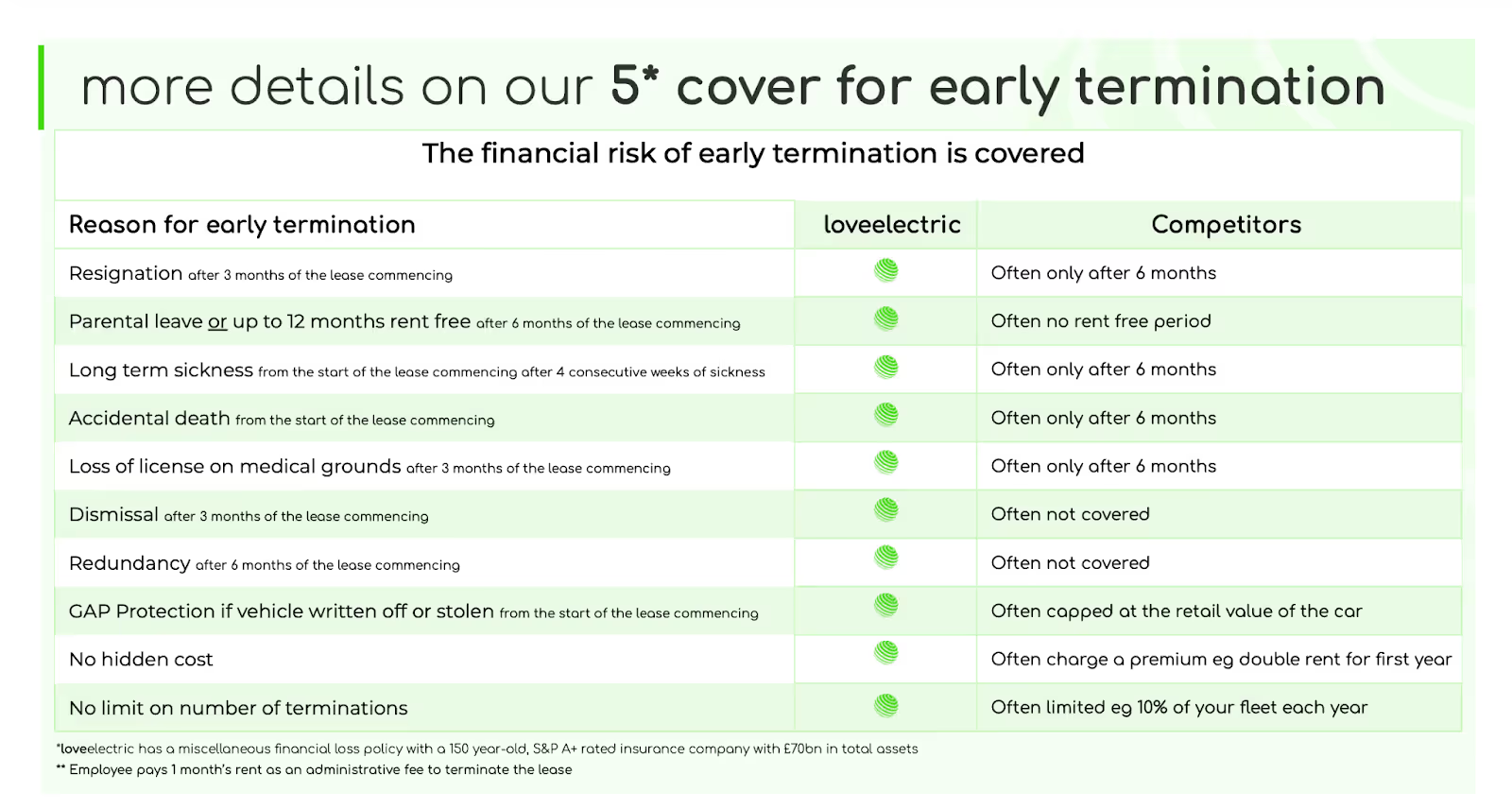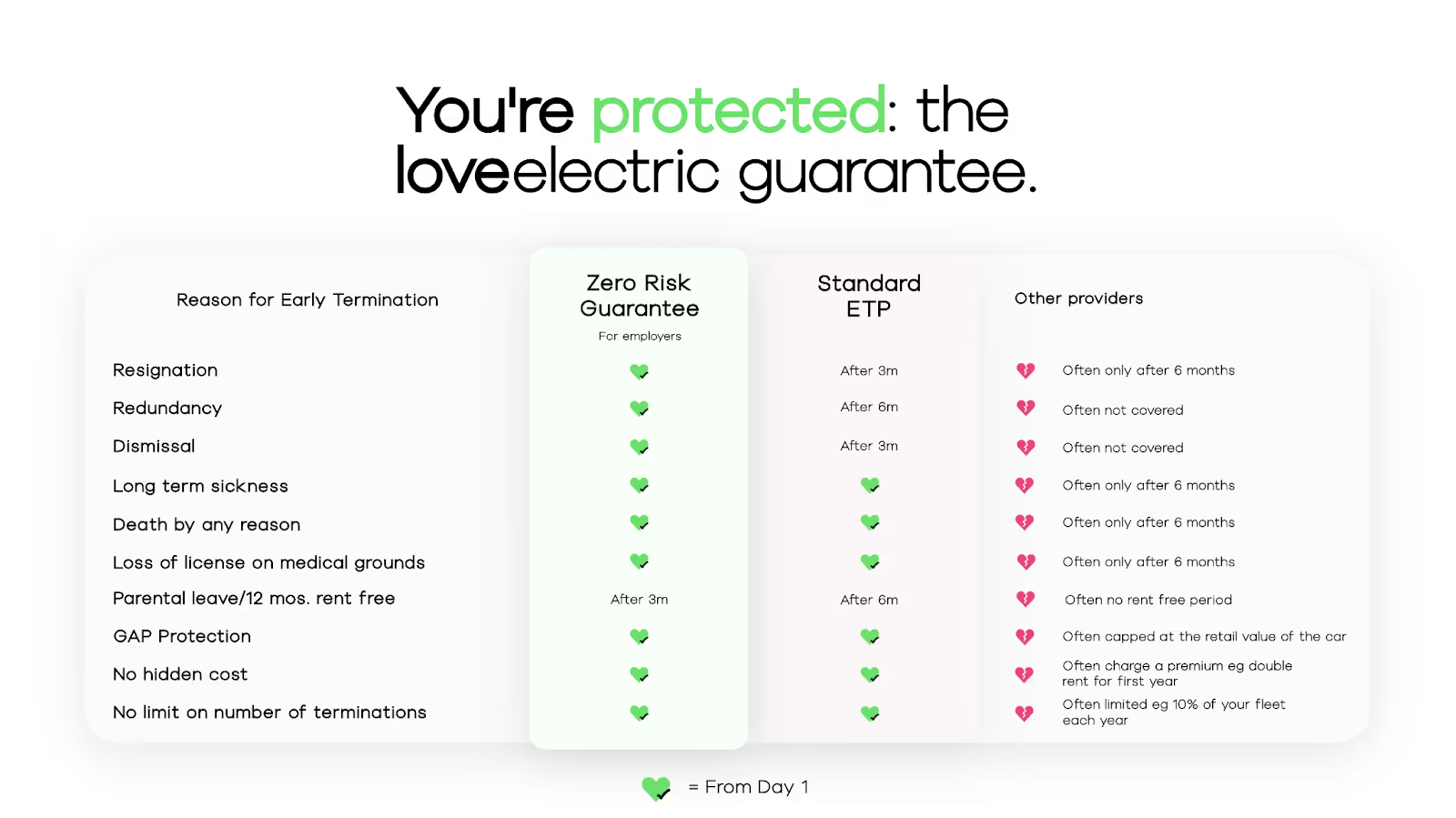How Does Salary Sacrifice for Cars Work: A Guide to the EV Scheme

If you’ve ever looked into salary sacrifice schemes, you’ve likely found yourself tangled in tax jargon, unsure how the savings actually work, or wondering what happens if you change jobs halfway through a lease.
That confusion stops a lot of people from taking advantage of one of the best government-backed perks out there.
And that’s a shame, because salary sacrifice can make driving a brand-new EV up to 60% cheaper than leasing privately.
This guide breaks down exactly how the EV salary sacrifice scheme works, from what it really means to “sacrifice” part of your salary, to how payments, tax savings, and end-of-lease options work in practice.
So, whether you’re an employee curious about getting behind the wheel of an electric car or an employer exploring a greener, cost-neutral benefit, here’s how salary sacrifice really works, the loveelectric way.
What is salary sacrifice?
Salary sacrifice is when you agree to give up a portion of your gross salary (that’s your pay before tax and National Insurance) in exchange for a benefit.
Instead of receiving that money in cash, your employer uses it to cover the cost of something valuable to you. And really, it's not much of a ‘sacrifice’ at all because what you’re getting in return is something you would have spent money on anyway.
Traditionally, that might mean extra pension contributions or childcare vouchers. But now, more and more people are using salary sacrifice to drive a brand-new electric car.
What is the salary sacrifice EV car scheme?
If you want to use salary sacrifice to drive the electric vehicle of your dreams, you absolutely can. Assuming your employer is signed up to a provider like loveelectric.
It works the same as other salary sacrifice schemes (think the cycle-to-work scheme) except you’re exchanging part of your gross salary for the use of an electric car your employer provides.
The deduction comes straight out of your pay before tax and National Insurance, so you end up paying less tax overall, and saving up to 60% compared to leasing the same car privately.
It’s a government-backed, HMRC-approved way to make electric cars genuinely affordable, without any credit checks, big deposits, or complicated finance. Thanks to the UK’s ultra-low Benefit-in-Kind tax rate for EVs, it’s the most affordable way to get behind the wheel of a car you actually love.

How does salary sacrifice work for a car? – The EV way
Breaking salary sacrifice down step by step makes it easier to see what happens behind the scenes, from how payments are handled to how the savings add up.
Whether you’re thinking about joining your employer’s scheme or hoping to convince them to start one, here’s exactly how salary sacrifice works through loveelectric:
1. You agree to give up part of your salary for an EV
If your employer offers an EV salary sacrifice scheme, you need to decide whether or not you’ll opt in.
Generally, the higher your tax band, the bigger the savings, though lower and mid-income earners can still benefit. With loveelectric EV salary sacrifice is available to employees earning £27,000 and up.
Before you opt in, take a moment to check:
- The monthly deduction you’re comfortable with (versus the impact on your take-home pay)
- The Benefit-in-Kind (BiK) rate for the car you’re considering
- That the deduction won’t take your salary below the National Minimum Wage
- Whether any salary-based items (like pension contributions, student loan repayments, or statutory pay) might change

If you do decide to opt in, you’ll get to choose your EV and sign a salary sacrifice agreement with your employer to make it official.
Want to know what cars are available? Check out our car catalogue.
2. Your employer leases the car on your behalf
Once you’ve chosen your car and signed the salary sacrifice agreement, your employer takes care of the lease itself. The lease is technically in their name but you’re the one driving the car day to day.
The monthly lease cost (which includes the car, insurance, maintenance, road tax, and breakdown cover) is deducted from your gross salary before tax. Because this happens before Income Tax and National Insurance are applied, you only pay tax on what’s left.
In other words, you get a brand-new EV (or a used if you prefer!), your employer handles the admin (which is super simple anyway), and you save up to 60% compared to a standard personal lease.
3. You get your EV, with everything included
Once your lease is approved, your new car is delivered straight to your door.
From that point on, everything you need to stay on the road is bundled into one predictable monthly payment.
With Loveelectric, your monthly salary sacrifice includes:
- Insurance
- Maintenance
- Tyres
- Servicing
- Breakdown cover
You’ll also have access to the loveelectric Charge Card, which can cut your charging costs by up to 60% on all UK chargers (in public and at home). It's a great addition to your EV and most drivers find it’s a simple way to make their running costs even lower.
You can also add a Hypervolt charger at checkout which will be installed at your home.
.avif)
If you do get an EV, check out our resources on how to install an EV charger and what it costs to install an EV charger at home in the UK, and the costs of charging.
4. You get your first payslip (and see the savings)
Once your salary sacrifice starts, you’ll see a new line on your payslip showing the car deduction.
Because you’re paying from your gross salary, your Income Tax and National Insurance contributions are lower, meaning the overall impact on your take-home pay is far less than the car’s list price.
For many drivers, the monthly difference works out to 30–60% cheaper than a personal lease or finance plan. You get the same car, the same insurance, and all the same benefits, just at a fraction of the cost.
5. Eventually, the lease ends
When your lease term (usually 2–4 years) comes to an end, you’ll have a few simple options:
- Swap for a new EV: Most drivers choose to roll straight into a new lease — upgrading to the latest model with updated range and tech.
- Extend your current lease: Some vehicles can be extended month-to-month if you’re not ready to switch yet.
- Return the car: Your employer and loveelectric coordinate the collection, and any end-of-lease inspection is handled for you.
If you change jobs or need to end early
Life happens and salary sacrifice doesn’t have to lock you in. If you leave your company or need to end your lease early, loveelectric helps make it smooth and transparent.
Your employer’s scheme will outline what happens next, but typically you’ll have these options:
- Transfer the lease: If your new employer also works with loveelectric, your lease can often move with you.
- Early termination: If not, there’s a one-off early termination cost that’s clearly set out upfront, so there are no surprises.
- Replacement driver: Some employers allow another team member to take over the lease.

The key thing to know is that you’re never stuck. loveelectric’s support team works directly with your employer to make the process fair and flexible, even when plans change.
For employers, loveelectric’s Early Termination Protection and optional Zero Risk Guarantee mean you’re never left covering unexpected costs if an employee leaves. We’ve designed the scheme to protect both sides, so the benefits of salary sacrifice never turn into a burden.

How salary sacrifice works for employers
Eligibility & setup
To qualify, most leasing partners look for businesses that have been trading for at least two years and are either profitable or have £500k+ in net assets. The ideal setup is a company with 10+ employees and staff attrition under 15%. Once approved, a credit line is established with our leasing partners to fund vehicles.
Getting started is simple. Employers sign a short supplier agreement, and most can launch the scheme in around seven days. From there, loveelectric manages onboarding, employee communication, and support.
Cost model (why it’s cost-neutral)
The scheme is designed to be cost-neutral for employers. loveelectric’s service fee is balanced against the employer’s National Insurance savings created by the salary sacrifice deduction.
While employers do pay Class 1A NIC on the car’s Benefit-in-Kind (BiK) value, the NIC savings and potential VAT recovery usually offset this entirely. Each payroll report makes this breakdown transparent, so finance teams can easily track the net position.
Payroll mechanics & reporting
Every month, you’ll receive a payroll report detailing:
- Each employee’s salary deduction
- Employer Class 1A NIC on the BiK value
- VAT components
- The overall cost position
We also include a short payroll tutorial and an example report to make posting entries simple and consistent for your finance team.
Managing risk & early exits
If an employee leaves early, any standard early-exit fees are recovered via payroll where possible. When that’s not an option, our Early Termination Protection and optional Zero Risk Guarantee step in, ensuring your business isn’t left with unexpected costs.
Launch & adoption
Employees join the scheme through a simple magic link, no manual invites or setup needed. You’ll also get a full promotional toolkit, plus access to Lunch & Learn sessions and 1-to-1 EV consultations to help drive adoption internally.
Ongoing admin
We’ve kept ongoing admin intentionally light. Everything you need, from approving or declining orders to downloading payroll reports and viewing live leases, sits in the Company Portal.
Most businesses spend around 15 minutes a month managing the scheme.
Who can access the salary sacrifice car scheme?
Any UK business can sign up to offer salary sacrifice, as long as it passes a simple credit check. loveelectric guides this process end-to-end and helps you go live in as little as seven days. Go ahead and check your eligibility here — it only takes a minute.
On the employee side, you’ll need to be:
- A permanent employee (full-time or part-time) aged between 18 and 65
- Earning above the National Minimum Wage after the sacrifice is applied
If your company already offers the scheme, you can get started right away by choosing your car and signing your agreement online.
If they don’t you can refer your company here.
With loveelectric’s Zero Risk Guarantee, there’s only upside—introduce a sustainable benefit employees genuinely love, without adding cost or complexity to the business.
How does salary sacrifice for cars work FAQs
How does salary sacrifice affect take-home pay?
Your employer deducts a fixed amount from your gross pay each month to cover the car. Because you’re taxed on a lower salary, you pay less Income Tax and NI, so the net drop in take-home is usually smaller than the gross sacrifice. A BiK line for the car is added via payroll.
Example: a £475 gross sacrifice shows as ~£282 in take-home impact (about a 41% saving in the brochure scenario); BiK is ~£21/month in that example.
Employers receive a simple payroll report so deductions can be processed quickly.
Is a salary sacrifice car worth it for higher earners?
Often, yes. The higher your marginal tax rate, the bigger the tax/NI saving on the gross deduction.
For those over £100,000, salary sacrifice can also help by reducing adjusted income—e.g., reclaiming part of the Personal Allowance, avoiding the effective 60% tax trap, and regaining access to benefits like 30 hours’ free childcare once income falls below the threshold.
Mid-earners still save meaningfully; it’s just worth checking affordability for your situation.
Can you buy the car at the end?
Generally, no. Salary sacrifice is set up as a lease with no guaranteed purchase option at the end of term—you hand the car back and can start a new agreement if you wish. If owning the vehicle is important, consider alternative financing routes.
Can I leave the scheme early?
Usually, yes—but there are set routes and fees. If you change jobs, the preferred route is to transfer the lease to your new employer (they’ll need to be eligible and sign up). If a transfer isn’t possible, an early-exit fee typically around one month’s rental applies to end the agreement.
On the employer side, loveelectric includes Early Termination Protection, with an optional Zero Risk Guarantee, so the business isn’t left covering unpaid early-exit costs if recovery via payroll isn’t possible.





.webp)